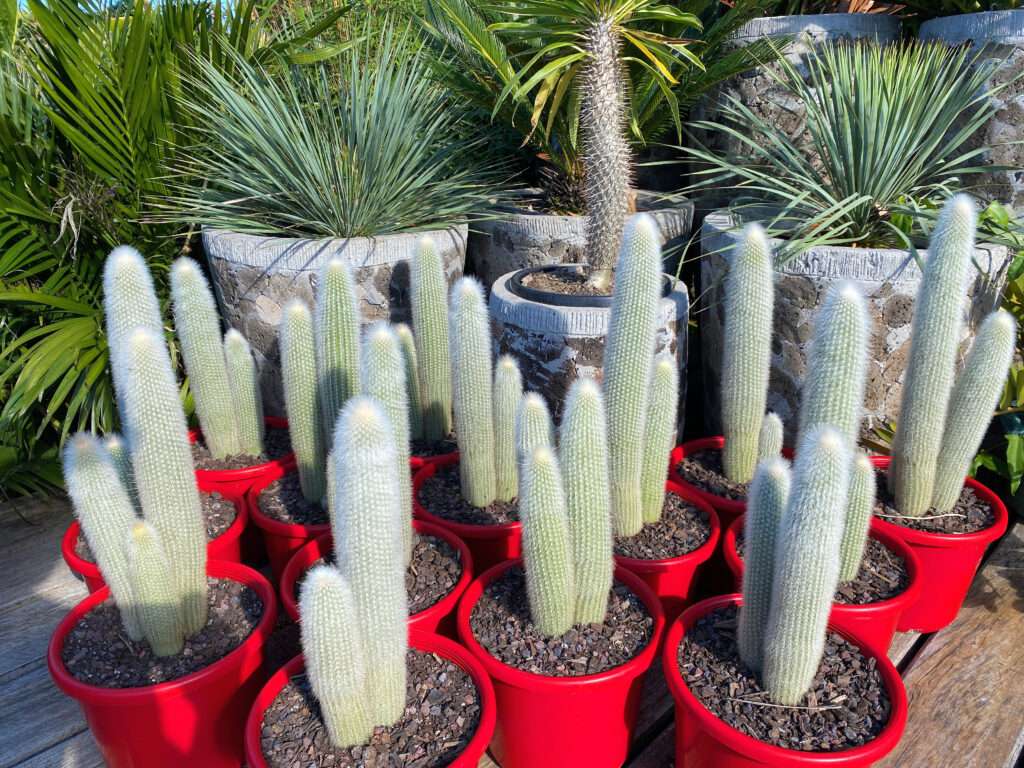
The silver or wooly torch cactus, commonly known as Cleistocactus strausii, is a perennial flowering cactus. The wooly, white, fine spines and bristles that cover the stem of this succulent give it a distinctive look. The Cleistocactus strausii plant can be grown anywhere, including as an indoor plant or as part of a cactus collection in your garden. It is typically found in deserts and semi-arid areas.
Light Requirements
In sunny settings, the Cleistocactus strausii plant thrives. In order for the silver torch cactus to flower, it must be exposed to direct sunshine for five to eight hours each day. In order to ensure that your Cleistocactus strausii receives adequate sunlight throughout the summer if you are growing it indoors, transfer it outside during the day.
Also good is a window that faces south. The Cleistocactus strausii succulent requires afternoon sunlight, which the south-facing window primarily receives. Your plant won’t get sickly and lanky if you do this.

Temperature Requirements
Cleistocactus strausii, like all other cacti plants, cannot endure excessively hot temperatures. The woolly cactus prefers high temperatures over 70 degrees Fahrenheit together with little humidity. The Cleistocactus strausii can endure low temperatures between 50 and 59 degrees Fahrenheit. Consider bringing your succulent indoors if the temperature drops below 50 °F.
The Cleistocactus strausii can endure low temperatures of up to 14 F, but it is not cold resistant, thus anything below that will cause the plant to die.
Water Requirements
The drought-tolerant succulent Cleistocactus strausii needs frequent watering during the summer, but only after checking the moisture level of the topsoil. The best way is to soak and dry. Water your Cleistocactus strausii until the soil is completely submerged. Before watering again, let the top inch of soil dry out to reduce the chance of overwatering.
Water your Cleistocactus strausii once every two months or whenever it begins to show signs of wilting throughout the winter. As long as the plant is healthy and full, you can leave it dry throughout winter. The Cleistocactus strausii will be in its dormant form during this time, and the nearby low temperatures will help to temporarily retain ground moisture.
Soil
In soil that is permeable and has less nitrogen, Cleistocactus strausii does well. Make sure to mix the clay and sand in the soil by adding 50% of the sand when growing snow pole cacti in clay. By doing this, the soil’s structure is enhanced.
If you’re growing your Cleistocactus strausii indoors, you’ll also need a potting soil that drains well. To enhance the drainage and moisture retention of the potting mixture, add peat moss, sand, and perlite. By doing this, you also lessen the possibility of root rot.
Fertilizer
Apply a long-term, slow-release fertilizer with low nitrogen if you want to fertilize Cleistocactus strausii. The nutrients that your succulent needs to blossom and grow healthily are supplemented with fertilizers. When repotting Cleistocactus strausii, the fertilizer ought to be spread on top of the potting soil or combined with it.
Table





